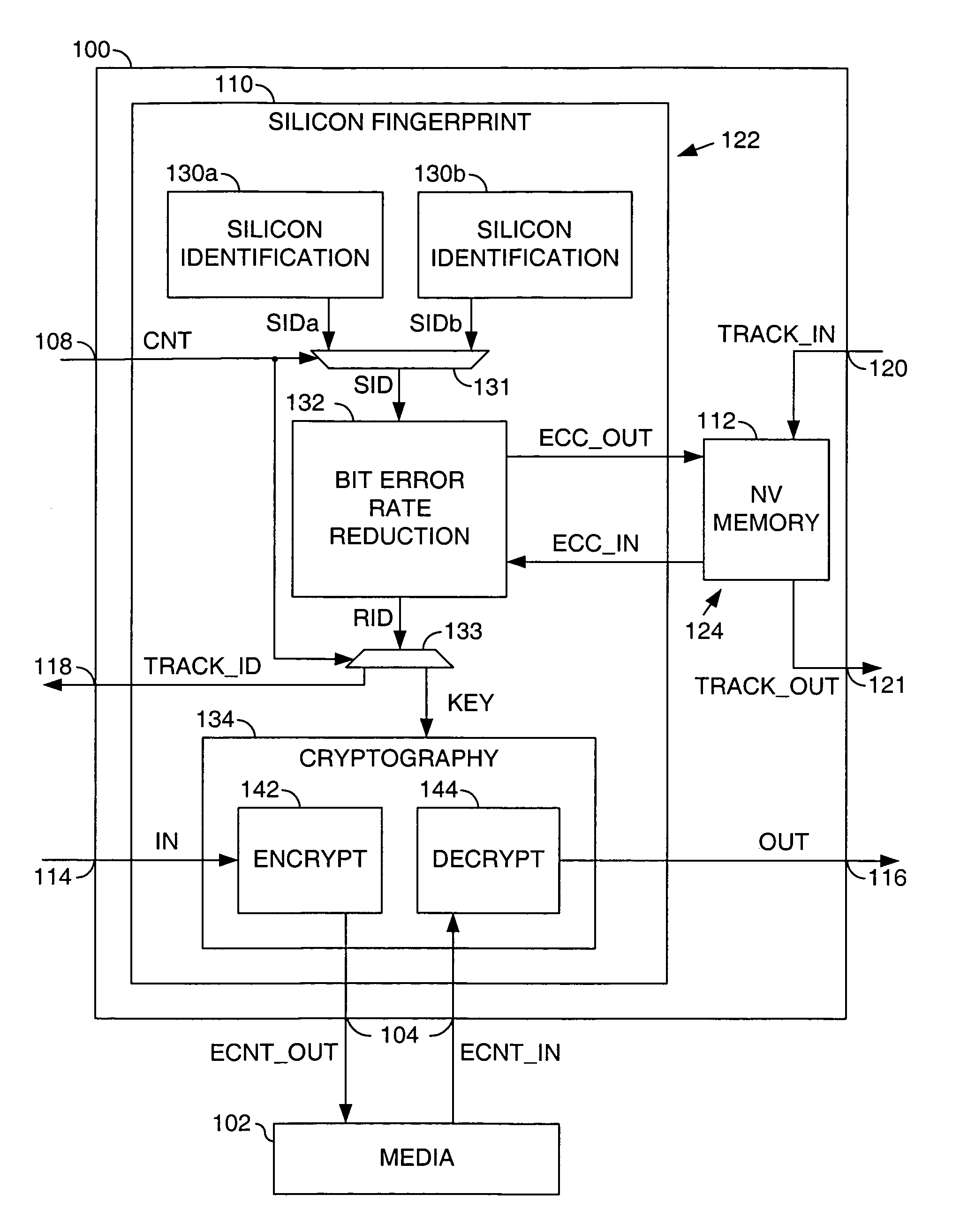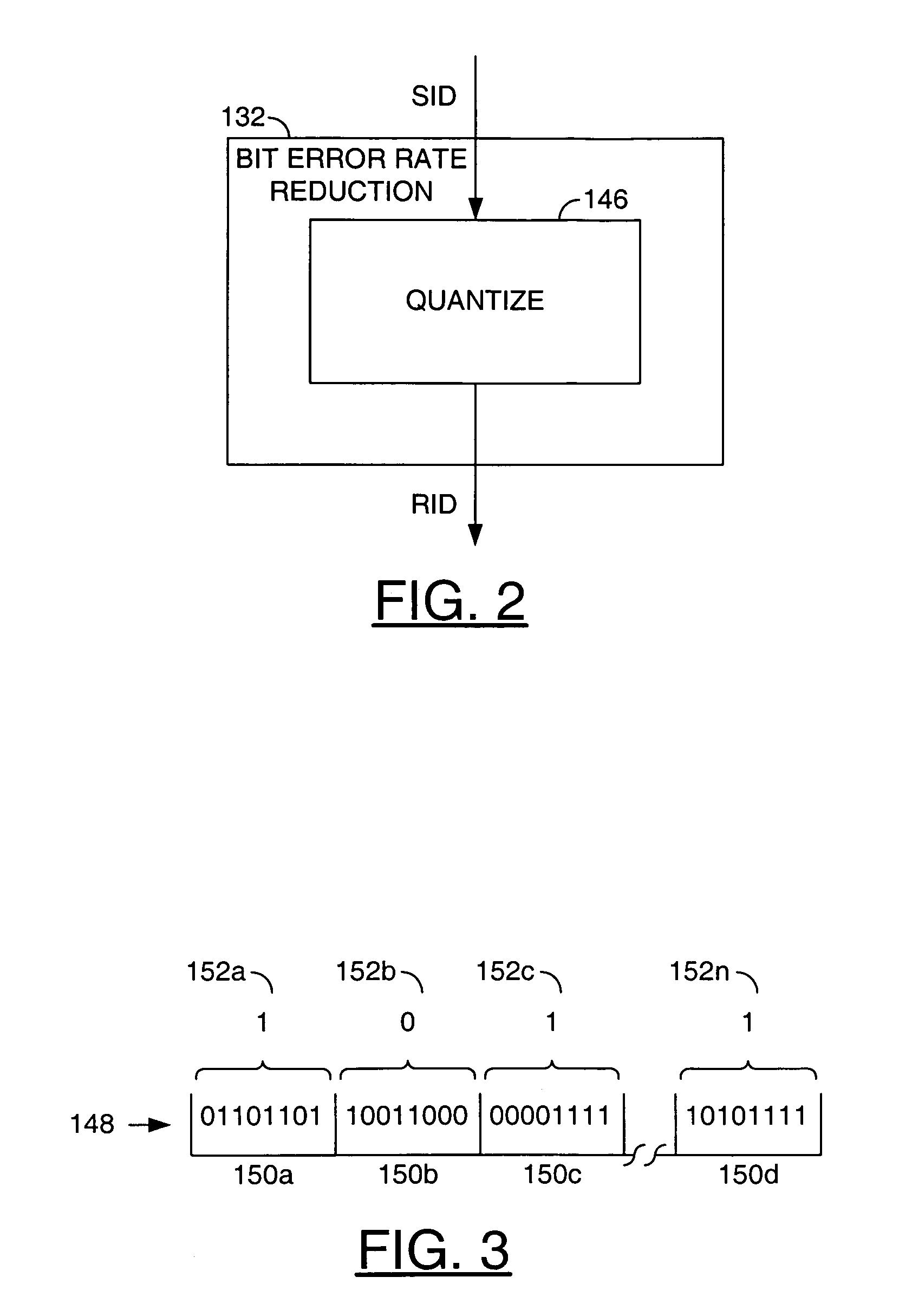Security application using silicon fingerprint identification
a fingerprint identification and security application technology, applied in the field of digital rights management, can solve the problems of cost or repeatability of chip identification values for cryptography, inability to measure values perfectly repeatable, and inability of hackers to discover secrets, etc., and achieve the effect of reducing the bit error rate of identification values
- Summary
- Abstract
- Description
- Claims
- Application Information
AI Technical Summary
Benefits of technology
Problems solved by technology
Method used
Image
Examples
Embodiment Construction
[0011]Referring to FIG. 1, a block diagram of circuit 100 is shown in accordance with a preferred embodiment of the present invention. The circuit (or system) 100 may be referred to as a identification (ID) circuit. The ID circuit 100 may communicate with a media 102 through an interface 104 for sending and / or receiving encrypted content. The ID circuit 100 may optionally receive a signal (e.g., CNT) through an interface 108 to command a presentation of a tracking identification value.
[0012]The ID circuit 100 generally comprises a circuit (or module) 110 and an optional circuit (or module) 112. In an encryption application, an input signal (e.g., IN) may be received at an input 114 by the circuit 110 and an output signal (e.g., ECNT_OUT) may be presented by the circuit 110 to the media 102. In a decryption application, an input signal (e.g., ECNT_IN) may be received from the media 102 and an output signal (e.g., OUT) may be presented from the circuit 110 at an output 116.
[0013]An op...
PUM
 Login to View More
Login to View More Abstract
Description
Claims
Application Information
 Login to View More
Login to View More - R&D
- Intellectual Property
- Life Sciences
- Materials
- Tech Scout
- Unparalleled Data Quality
- Higher Quality Content
- 60% Fewer Hallucinations
Browse by: Latest US Patents, China's latest patents, Technical Efficacy Thesaurus, Application Domain, Technology Topic, Popular Technical Reports.
© 2025 PatSnap. All rights reserved.Legal|Privacy policy|Modern Slavery Act Transparency Statement|Sitemap|About US| Contact US: help@patsnap.com



